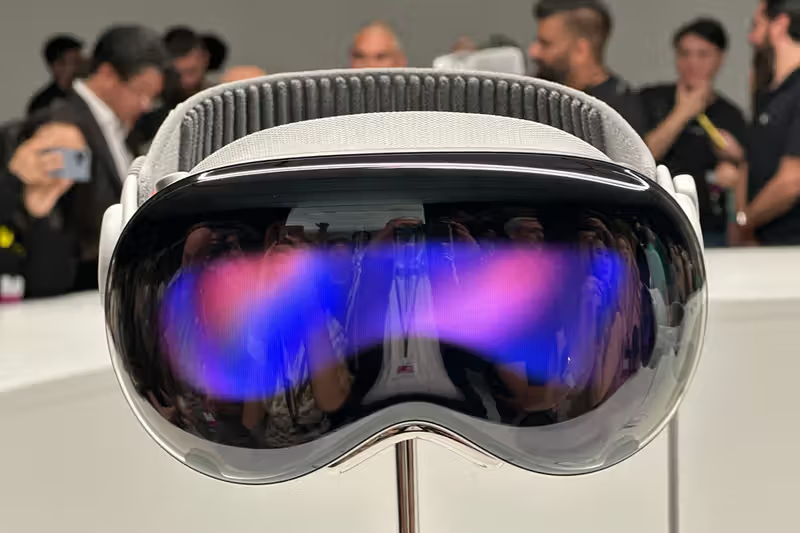Where Did the Metaverse Go? | 매거진에 참여하세요
Where Did the Metaverse Go?
#Immersive #Tech #Metaverse #Ecosystem #XR #Reality #Bridge
A Look Through Apple Vision Pro 2 : The Meteoric Rise—and Fall—of the Metaverse
In the early 2020s, "metaverse" was one of the hottest buzzwords in tech and pop culture.
The frenzy peaked in 2021 when Facebook rebranded as Meta, signaling its bet on a future built on virtual worlds.
The vision? A seamless blend of virtual reality (VR), augmented reality (AR), blockchain, NFTs, and spatial computing
—all converging into a new kind of internet: immersive, decentralized, and persistent.
Tech giants like Meta, Microsoft, Google, and Apple poured billions into the dream.
Startups followed. Use cases exploded across sectors
—education, retail, concerts, real estate, even telemedicine—racing to integrate immersive technologies.
But once the pandemic subsided and the world slowly returned to in-person life, the metaverse hype began to unravel. Reality hit hard.
The big question surfaced: Why should we live in a virtual world at all?
The Immersion Gap: Tech Without Purpose
Despite the initial excitement, many metaverse platforms struggled to retain users.
Technical limitations like bulky VR headsets, battery issues, low-resolution displays, and high latency broke immersion.
Content ecosystems were sparse. Most importantly, the industry failed to answer
: What real problem does the metaverse solve for the average person?
The dream of an immersive alternate reality fizzled as users returned to their physical lives, leaving behind the clunky,
expensive portals into the metaverse.
And the shutdowns followed:
A consistent theme emerged: If it’s not immersive enough, people simply won’t care.

Apple Vision Pro: Technological Brilliance Meets Human Disinterest
Enter Apple’s Vision Pro, unveiled in 2024—a bold attempt to bridge virtual and physical realities through what Apple calls spatial computing.
The device came packed with high-resolution displays, eye and hand tracking, and a seamless interface that aimed to mix virtual content into your real-world environment. It wasn’t just another VR headset—it was a step toward redefining how we compute.
But it stumbled.
- $3,500 price tag made it wildly inaccessible
- Heavy, uncomfortable design discouraged long-term wear
- Severe content shortage—no Netflix, no YouTube, no compelling app ecosystem
- Unclear use cases: People asked, “What can I actually do with this?”
As a result, Vision Pro became more of a tech demo than a cultural revolution.
Despite its cutting-edge capabilities, it lacked real-world relevance—earning the label: a stunning, expensive solution in search of a problem.
Vision Pro 2: More AI, Same Dilemma?
Now, all eyes are on the second-generation Vision Pro. Rumors suggest Apple will double down on high-end specs:
Integration of Apple Intelligence (on-device AI)
A more powerful M5 chip, replacing the M2
UI upgrades for intuitive interaction via gaze, gesture, and voice
But: Still expected to hover near the $3,499 price point
Apple reportedly canceled or delayed its cheaper Vision SE model. Instead of going mass-market, it’s opting to refine the premium experience—hoping better software and AI can deliver stronger value.
The question remains: Will users find a reason to care this time?

The Core Problem: Lack of Meaning, Not Just Hardware
The metaverse doesn’t need better specs—it needs better answers.
If it aims to become an immersive bridge between reality and virtuality, it must provide compelling value. Not just novelty. Not just escape. But genuine utility in everyday life.
Today, most people still prefer real-world interactions. Without experiences in the virtual realm that are uniquely valuable—emotionally, socially, or functionally—users will not stay.
There’s also a trust deficit. Immersive spaces generate massive amounts of personal data.
Without robust privacy frameworks, legal guardrails, and ethical design, widespread adoption is unlikely.
One Success Story: Gaming
The only domain where the metaverse has actually worked? Gaming.
Platforms like Roblox and Fortnite have created living, breathing virtual worlds where players socialize, create, and transact.
VR headsets like the Oculus Quest series have found relative success in the gaming space.
But here’s the thing: Gamers don’t call it a metaverse. They call it an online game, or a virtual world.
That linguistic shift reveals a deeper truth: The term “metaverse” might carry too much baggage—and not enough practical meaning—for most people.
What Needs to Change?
The metaverse will not thrive on hardware specs alone. It needs:
- Human-centered design: What problems does it solve? What emotions does it evoke?
- Cross-domain applications: Beyond games—what about education, therapy, collaboration, social connection?
- Compelling content: Not just more, but better. Experiences people want to return to.
- Accessible devices: Comfortable, affordable, seamless.
- Trustworthy infrastructure: Privacy-first, ethically governed.
Apple’s Vision Pro showed us the technological possibility. But it also reminded us that immersion without purpose is just a very expensive demo.
Final Thought: The Metaverse Needs Strategy, Not Hype
The metaverse isn’t dead—but it is lost. And perhaps, that’s okay.
What’s needed now is not another headset or buzzword, but a clear strategy
: Where does the metaverse truly belong in our lives? Who needs it? And how can it provide real, repeatable, meaningful value?
Until we can answer those questions, the metaverse will remain a solution still searching for its problem.






